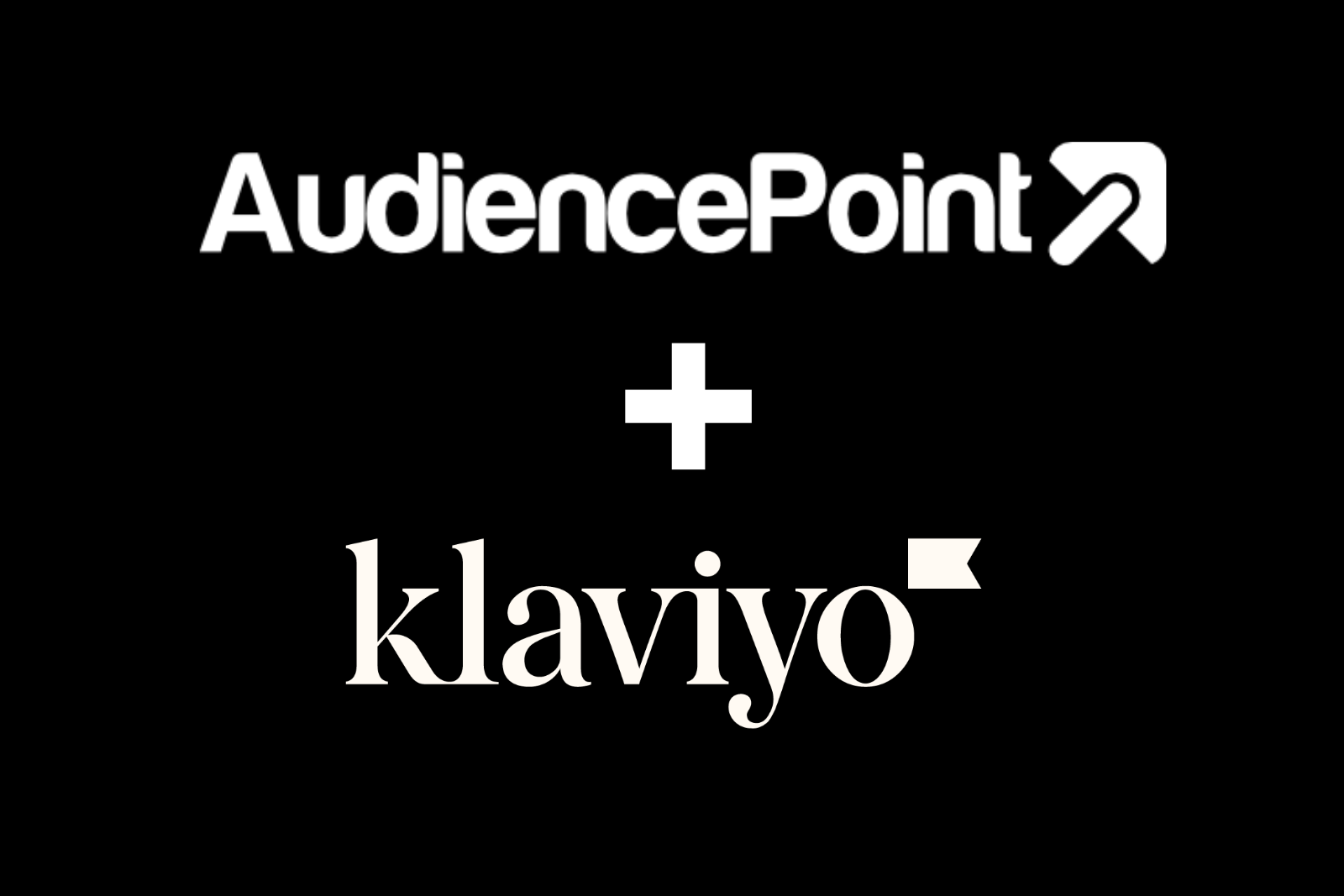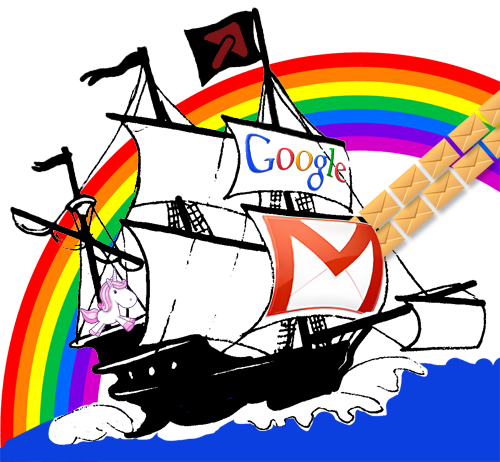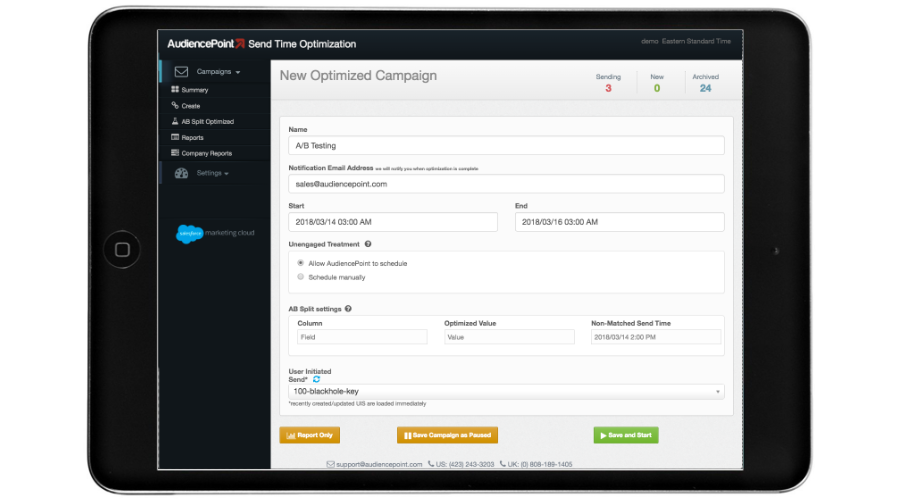AudiencePoint is thrilled to announce our new integration with Klaviyo! AudiencePoint is looking for partners to pilot our...
Email list hygiene is a crucial component of any successful email marketing strategy. It refers to the regular process of cleaning and maintaining your email list to ensure it comprises only valid and active email addresses. This involves removing inactive subscribers, correcting typing errors in email addresses, and verifying the authenticity of email addresses to minimize bounce rates and enhance email deliverability. Neglecting proper email list hygiene can adversely impact engagement rates and tarnish your sender reputation.
Learn more about Email Marketing Trends In 2025!
Defining email list hygiene and its importance
Email list hygiene entails practices that prevent your marketing communications from being flagged as spam. It includes removing invalid emails, engaging inactive email subscribers proactively, and using validation tools to verify new entries. By keeping your list updated, you ensure that your marketing efforts are effectively reaching the right audience, thereby improving engagement and conversion rates.
Impact of poor list hygiene on deliverability and spam complaints
Poor list hygiene can lead to high bounce rates, which negatively affect your deliverability. Emails sent to invalid email addresses increase the risk of being marked as spam, thereby lowering your inbox placement rates. Furthermore, high bounce rates can damage your sender reputation, causing email service providers to distrust your emails and eventually filter them away from users’ main inboxes.
Benefits of maintaining good email etiquette
Maintaining good email etiquette through consistent list hygiene results in cleaner, more engaged subscribers and improved marketing performance. Subscribers who receive relevant and wanted content are more likely to interact positively with your emails, which enhances engagement metrics such as open and click-through rates. Moreover, it ensures compliance with email regulations and protects your brand’s reputation by building trust with your audience.
Why Is Email List Hygiene Important?
Email list hygiene is an integral element of a successful email marketing strategy. It involves keeping your subscriber list clean by removing invalid, inactive, or disengaged email addresses. This practice is crucial for maintaining a positive sender reputation, which directly impacts your ability to reach your audience effectively. Without proper hygiene, you risk sending emails to numerous inactive or invalid addresses, leading to high bounce rates, lower engagement, and damage to your reputation.
Protecting your sender reputation is one of the primary reasons why email list hygiene is vital. A poor reputation can lead to your emails ending up in spam folders or, worse, being blocked by email service providers. By maintaining a clean list, you ensure that you’re sending emails only to those who are genuinely interested in your content, greatly reducing the chances of your emails being marked as spam. This proactive strategy boosts your credibility and ensures your campaigns yield better results. Additionally, a healthy email program involves regularly cleaning and segmenting your email lists, implementing a sunset policy for unengaged subscribers, and actively addressing inactive recipients to protect the overall health and performance of the email program.
Enhancing Email Deliverability, Engagement, and Sender Reputation
List hygiene enhances your email deliverability—the ability of your emails to reach the intended recipient’s inbox. A pristine email list means fewer bounces, as you have filtered out incorrect or inactive addresses. This not only saves you operational costs but also maximizes your engagement metrics because your content is delivered to actively participating subscribers. Effective email marketing campaigns rely on maintaining a high-quality subscriber list to ensure better engagement, conversion rates, and return on investment.
Furthermore, when you consistently connect with a receptive and engaged audience, it positively reflects in your campaign analytics. You achieve higher open and click-through rates, as the recipients have previously shown interest in your content. Engaged recipients are more likely to convert, effectively boosting your campaign’s ROI. By focusing on engaging content for a verified audience, you reinforce your brand’s authority and reliability.
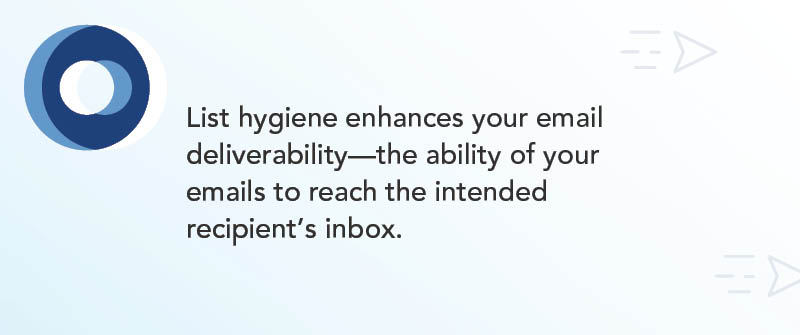
Compliance with Email Marketing Regulations
Not only does good list hygiene improve your marketing efforts, but it also ensures compliance with email marketing regulations such as GDPR and CAN-SPAM. These laws protect consumer privacy and mandate that businesses only interact with individuals who have explicitly opted in to receive emails. Implementing double opt ins, where a confirmation email is sent after a user submits their information, not only verifies their desire to subscribe but also helps reduce the chances of emails being marked as spam. By routinely cleaning your lists and using double opt ins, you adhere to these legal standards, thereby safeguarding your organization from potential legal repercussions. This compliance benefits your brand by fostering trust with your subscribers, who will appreciate your efforts to respect their preferences and protect their privacy.
In conclusion, prioritizing email list hygiene is a straightforward yet powerful practice that preserves your sender reputation, enhances deliverability and engagement, and ensures compliance with essential regulations. Leveraging tools like AudiencePoint’s ListFit, you can effortlessly maintain a clean list, allowing you to focus on crafting compelling content that resonates with your audience.
How Often Should You Clean An Email List?
Cleaning an email list regularly is crucial for maintaining optimal email deliverability and engagement rates. Best practices suggest you should clean your email list at least quarterly. This includes identifying and removing outdated email addresses that might cause delivery issues. However, depending on the volume of your email sends and your specific engagement metrics, you might consider more frequent reviews, such as monthly cleaning, to maintain the list’s health. Inconsistent cleaning can lead to increased bounce rates and spam complaints, which damage your sender reputation over time.
Identifying inactive and unengaged subscribers
To effectively conduct email list cleaning, it is essential to identify and re engage inactive subscribers before removing them. These are typically those who have not opened or interacted with your emails over a specific period, usually six to twelve months. Using engagement metrics to identify these subscribers helps in maintaining a healthy list that reflects current interest and engagement with your content. AudiencePoint’s tools can help you track and manage subscriber engagement efficiently, ensuring you avoid the pitfalls of emailing unresponsive recipients.
Tools and techniques for effective list hygiene
Several tools can assist in comprehensive email list maintenance. Email verification services, such as ListFit by AudiencePoint, perform checks to ensure emails are valid and active. These tools can remove invalid, risky, and fake email addresses, reducing the chance of your emails landing in spam folders. Additionally, employing segmentation techniques allows you to tailor content to your audience, increasing chances of engagement and decreasing the risk of inactivity. The insights provided by AudiencePoint’s vast data pool power your cleaning efforts with accuracy, helping pinpoint which subscribers are genuinely engaged versus those who aren’t.
Consistent list hygiene efforts are vital for any email marketing strategy. By integrating advanced tools and data analytics, you ensure a healthier list that translates into better deliverability rates, engagement, and overall success in your campaigns.
How Much Does It Cost To Clean An Email List?
Cleaning an email list is a critical component of maintaining email hygiene, and its cost can vary greatly depending on several factors. Generally, the expenses associated with email list cleaning are dependent on the size of the list, the complexity of the data, and the tools or services chosen for the task. On average, it may cost anywhere from a few cents to several dollars per thousand emails, depending on the specific service and the features it offers.
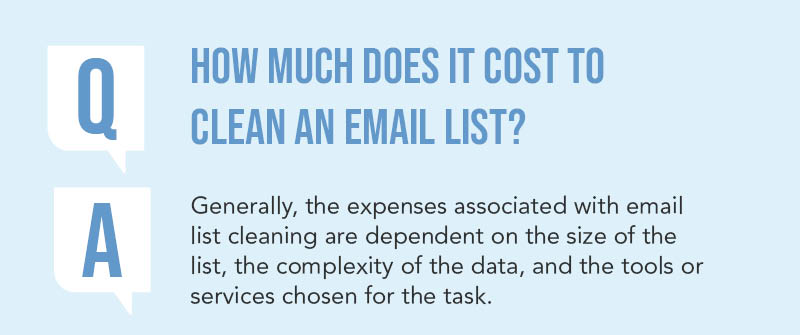
Factors affecting the cost of list cleaning
The primary factors influencing the cost of email list cleaning include the number of subscribers, the provider or tool selected, and whether additional features are needed, such as real-time validation or detailed reporting. Conducting an email campaign aimed at re-engaging inactive subscribers can also impact costs, as it helps determine if non-responsive subscribers can be prompted to engage before ultimately removing them from the email list. Providers might offer tiered pricing models, where the per-email cost decreases as the number of emails increases. Additionally, premium features like integration capabilities or ongoing list monitoring can also affect the total expenditure.
Cost-effective solutions and tools
Email marketers have access to a wide range of list cleaning tools, each designed to cater to different needs and budgets. Free or low-cost solutions can be effective for smaller lists or less intricate data cleaning. Conversely, for larger lists or more comprehensive validation, investing in robust platforms that offer scalable solutions can be prudent. Platforms like AudiencePoint provide advanced list hygiene tools that strike a balance between functionality and affordability, ensuring email marketers get the best return on investment.
ROI of investing in list hygiene
Allocating part of your email marketing budget to maintain list hygiene is not just an expense but an investment in your marketing strategy’s overall success. Maintaining clean email lists improves deliverability, which leads to better inbox placement and increased engagement rates. Implementing a re engagement campaign can help reconnect with unengaged subscribers before removing them from your lists. This strategic approach uses targeted email communications to assess interest and encourage subscribers to opt-in or update preferences, thereby improving engagement metrics and maintaining sender reputation. The reduction in bounced emails and spam complaints can also enhance sender reputation. By keeping an accurate and up-to-date list, email marketers can streamline their operations and focus on more strategic initiatives, ultimately leading to higher conversion rates and reduced costs associated with ineffective email campaigns.
Tips and Examples of Email Hygiene Best Practices
Maintaining excellent email hygiene best practices is vital for fostering robust email marketing strategies and safeguarding your sender reputation. By adopting these practices, you ensure your messages reach their intended recipients and avoid the spam folder, improving both engagement and conversion rates. Here are some effective strategies to maintain an immaculate email list:
Implementing Double Opt-In for New Subscribers
One essential practice is utilizing a double opt-in process for new subscribers. This method requires users to confirm their subscription by clicking a link in a follow-up email after their initial sign-up. By doing so, you verify that the subscribers are genuinely interested and prevent potential spammy or incorrect email entries. Double opt-in not only helps in maintaining a clean list but also boosts the quality of your subscriber base.
Personalization and Segmenting for Engagement
Effective personalization and segmentation are cornerstones of engaging email marketing. By segmenting your audience based on their behaviors and preferences, emails become more targeted, relevant, and engaging to the recipient. Personalization techniques, such as using the recipient’s name or tailoring content based on previous interactions, significantly improve open and click-through rates. This strategic approach fosters customer loyalty and boosts your campaign’s overall effectiveness.
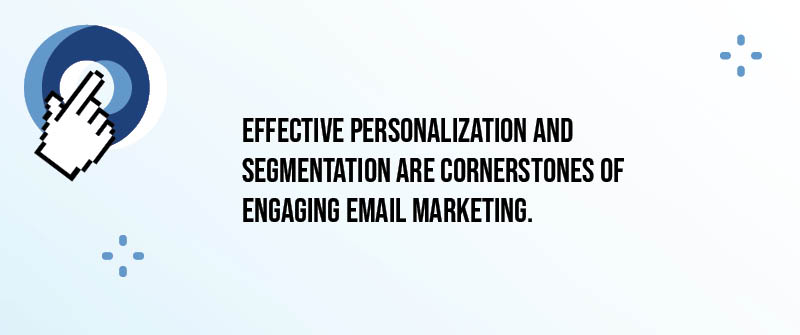
Regularly Updating and Verifying Email Lists
Consistent updates and verifications of your email list are crucial to maintaining its health. Regularly scrubbing your list to remove inactive or unengaged subscribers prevents bounced emails and protects your sender reputation. Employing list verification tools can help identify invalid addresses, ensuring your messages always hit valid targets. These practices not only enhance email etiquette but also optimize your deliverability and engagement metrics.
By following these email hygiene best practices, you maintain a high-quality email list, which is crucial for sustaining effective communication with your audience and driving the success of your email marketing efforts.
Conclusion: The Future of Email List Hygiene
As we look toward 2024 and beyond, the importance of email list hygiene has never been more critical. The dynamic nature of email marketing means that evolving best practices are essential to stay competitive and ensure high deliverability. With spam filters becoming more sophisticated, having a clean and engaged subscriber list is not just beneficial—it’s a necessity.
Evolving Best Practices for 2025
Advancements in technology and increased awareness about privacy mean that the coming years will see email marketers adopting more refined practices. It will be crucial to integrate artificial intelligence to tailor email content even more precisely. Also, leveraging big data analytics will allow marketers to gain deeper insights into subscriber behavior, ensuring only the most engaged recipients are targeted.
Automation tools will also become a staple for routine actions like email verification and list segmentation. This not only saves time but also enhances accuracy, ensuring that your email list is optimally managed. With GDPR and similar regulations setting the tone for privacy standards, continuous compliance will also play a critical role in list hygiene strategies.
Long-Term Benefits of Maintaining List Hygiene
The long-term benefits of meticulous list maintenance cannot be overstated. Besides significantly enhancing deliverability rates, good hygiene practices boost the reputation of your domain, reducing costs associated with undelivered emails. It also ensures better engagement levels as content reaches genuinely interested subscribers.
Moreover, a clean email list results in more accurate metrics, allowing for improved decision-making and campaign adjustment. Reducing the risk of spam complaints and bounces means preserving your brand’s reputation, which is invaluable.
Therefore, investing resources into maintaining a clean list is a strategy that pays dividends well into the future, keeping both your subscribers and ISPs happy.
In the evolving landscape of email marketing, the skills, tools, and practices that marketers use to manage their email lists will define future success. Staying informed and proactive is key to navigating these changes effectively.
Drive your email marketing forward with deep insights from AudiencePoint. By optimizing list hygiene today, you enhance your deliverability rate, maximize customer engagement, and pave the way to future growth and success. Utilize our unmatched data insights to stay ahead of the curve, re-engage dormant subscribers, and refine your audience targeting for superior results. Contact AudiencePoint to learn more!

